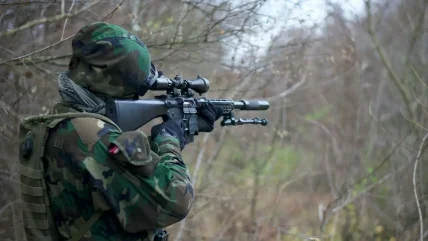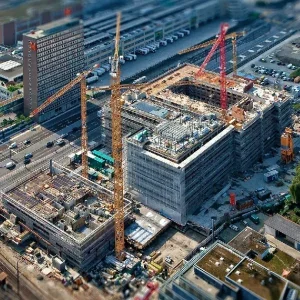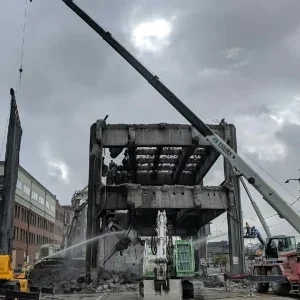
Introduction
The cranes industry, essential for construction, logistics, and infrastructure development, faces significant challenges in regions affected by interstate armed conflicts. These conflicts can disrupt supply chains, damage infrastructure, and pose safety risks. This article explores the impacts of interstate armed conflict on the cranes industry, discusses related challenges, and outlines strategies to mitigate these effects. By understanding these factors and implementing adaptive measures, industry players can better navigate the complexities of operating in conflict zones.
Understanding interstate armed conflict
Definition and causes
Interstate armed conflicts involve prolonged armed confrontations between nation-states. Several factors can lead to such conflicts, including:
- Territorial Disputes: Competing claims over borders or regions.
- Resource Competition: Conflicts over natural resources such as oil, minerals, and water.
- Political and Ideological Differences: Disagreements over governance, political ideologies, and control.
- Historical Grievances: Long-standing historical animosities and unresolved disputes.
Historical context
Interstate armed conflicts have shaped the global landscape for centuries. Some notable examples include:
- The Gulf War (1990-1991): Iraq’s invasion of Kuwait led to a large-scale military conflict involving multiple nations.
- The Indo-Pakistani Wars: A series of conflicts between India and Pakistan, primarily over the Kashmir region.
- The Ukraine-Russia Conflict (2014-Present): Ongoing conflict involving territorial disputes and political tensions.
Impacts on the cranes industry
Supply chain disruptions
Armed conflicts can severely disrupt supply chains, affecting the availability of materials and equipment essential for the cranes industry:
- Material Shortages: Conflicts can lead to shortages of critical materials such as steel and electronics.
- Logistics Challenges: Transportation routes may be blocked or unsafe, complicating the delivery of equipment and parts.
- Import/Export Restrictions: Sanctions and trade restrictions can limit access to necessary components and materials.
Infrastructure damage
Armed conflicts often result in significant damage to infrastructure, impacting crane operations and construction projects:
- Damaged Sites: Construction sites and existing infrastructure may be damaged or destroyed.
- Unsafe Conditions: Ongoing conflict can create unsafe working conditions, posing risks to workers and equipment.
- Reconstruction Needs: Post-conflict reconstruction can lead to increased demand for cranes and related equipment, but also logistical challenges.
Safety and security risks
The safety and security of personnel and equipment are major concerns in conflict zones:
- Personnel Safety: Workers may be at risk from violence, bombings, and other conflict-related dangers.
- Equipment Theft and Damage: Cranes and other valuable equipment may be targeted for theft or sabotage.
- Insurance Costs: Insurance premiums for operating in conflict zones can be significantly higher due to increased risks.
Financial implications
Operating in conflict zones can have substantial financial impacts on the cranes industry:
- Increased Costs: Higher costs for security, insurance, and logistics.
- Project Delays: Delays due to conflict-related disruptions can lead to financial penalties and increased costs.
- Investment Risks: Increased risks can deter investment and financing for projects in conflict zones.
Strategies for mitigating the impact of armed conflict
Risk assessment and planning
Thorough risk assessment and planning are crucial for operating in conflict zones:
- Conflict Analysis: Conducting detailed analyses of conflict dynamics and potential risks.
- Contingency Planning: Developing contingency plans to address potential disruptions and emergencies.
- Stakeholder Engagement: Engaging with local stakeholders, including governments and communities, to understand the situation and build support.
Security measures
Implementing robust security measures can help protect personnel and equipment:
- Security Personnel: Hiring trained security personnel to safeguard sites and assets.
- Secure Facilities: Establishing secure facilities for equipment storage and operations.
- Travel Protocols: Implementing strict travel protocols and security checks for personnel.
Supply chain management
Effective supply chain management can mitigate the impact of disruptions:
- Diversified Suppliers: Building relationships with multiple suppliers to ensure material availability.
- Local Sourcing: Sourcing materials and components locally, where possible, to reduce dependency on international supply chains.
- Inventory Management: Maintaining higher inventory levels of critical materials and components to buffer against disruptions.
Technological solutions
Investing in technology can enhance resilience and efficiency:
- Remote Monitoring: Utilising IoT and remote monitoring systems to track equipment and operations in real-time.
- Automation: Implementing automation technologies to reduce reliance on local labour and improve efficiency.
- Predictive Analytics: Using predictive analytics to anticipate disruptions and optimise logistics and operations.
Financial strategies
Proactive financial strategies can help mitigate economic impacts:
- Insurance Coverage: Securing comprehensive insurance coverage tailored to conflict zones.
- Contingency Funds: Establishing contingency funds to cover unexpected costs and disruptions.
- Flexible Financing: Arranging flexible financing options to adapt to changing circumstances.
Case studies and industry best practices
Case study: crane operations in Afghanistan
Operating in Afghanistan has posed significant challenges for the cranes industry due to ongoing conflict. Key strategies have included:
- Local Partnerships: Partnering with local firms to navigate the complex security environment and access local resources.
- Enhanced Security Measures: Implementing stringent security protocols, including armed escorts and secure compounds.
- Adaptable Operations: Adapting operations to changing security conditions and maintaining flexibility in project timelines.
Best practice: unops infrastructure projects
The United Nations Office for Project Services (UNOPS) has implemented successful infrastructure projects in conflict zones by:
- Community Engagement: Engaging local communities to build trust and support for projects.
- Conflict-Sensitive Planning: Integrating conflict-sensitive approaches into project planning and execution.
- Capacity Building: Investing in local capacity building to ensure project sustainability and resilience.
Future Outlook and Industry Adaptation
Embracing resilience
Building resilience is essential for the cranes industry to operate effectively in conflict zones:
- Robust Planning: Developing robust planning processes that incorporate conflict risk assessments and mitigation strategies.
- Adaptive Management: Adopting adaptive management practices to respond quickly to changing conditions.
- Collaborative Approaches: Collaborating with other industry players, governments, and NGOs to enhance resilience and security.
Leveraging innovation
Innovation can play a critical role in mitigating the impacts of conflict:
- Advanced Technologies: Investing in advanced technologies such as drones for site assessments and remote operations.
- Sustainable Solutions: Implementing sustainable construction practices to reduce environmental impact and improve resilience.
- Digital Platforms: Using digital platforms for project management, communication, and coordination.
Preparing for global trends
Preparing for global trends and geopolitical shifts is crucial for long-term resilience:
- Geopolitical Monitoring: Monitoring geopolitical trends to anticipate potential conflicts and disruptions.
- Strategic Diversification: Diversifying markets and projects to reduce dependency on conflict-prone regions.
- Policy Advocacy: Engaging in policy advocacy to promote stability and conflict resolution.
Conclusion
Interstate armed conflict presents significant challenges for the cranes industry, impacting supply chains, infrastructure, safety, and finances. However, by implementing strategic measures such as thorough risk assessment, robust security measures, effective supply chain management, technological solutions, and proactive financial strategies, companies can mitigate these impacts and maintain their operations.
The future of the cranes industry lies in building resilience, embracing innovation, and preparing for global trends. By adopting these approaches, the industry can not only navigate the challenges posed by armed conflict but also thrive in an increasingly complex and unpredictable global environment. Through a combination of strategic foresight, collaboration, and adaptive management, the cranes industry can continue to play a vital role in global construction and infrastructure development, even in the face of interstate armed conflict.






